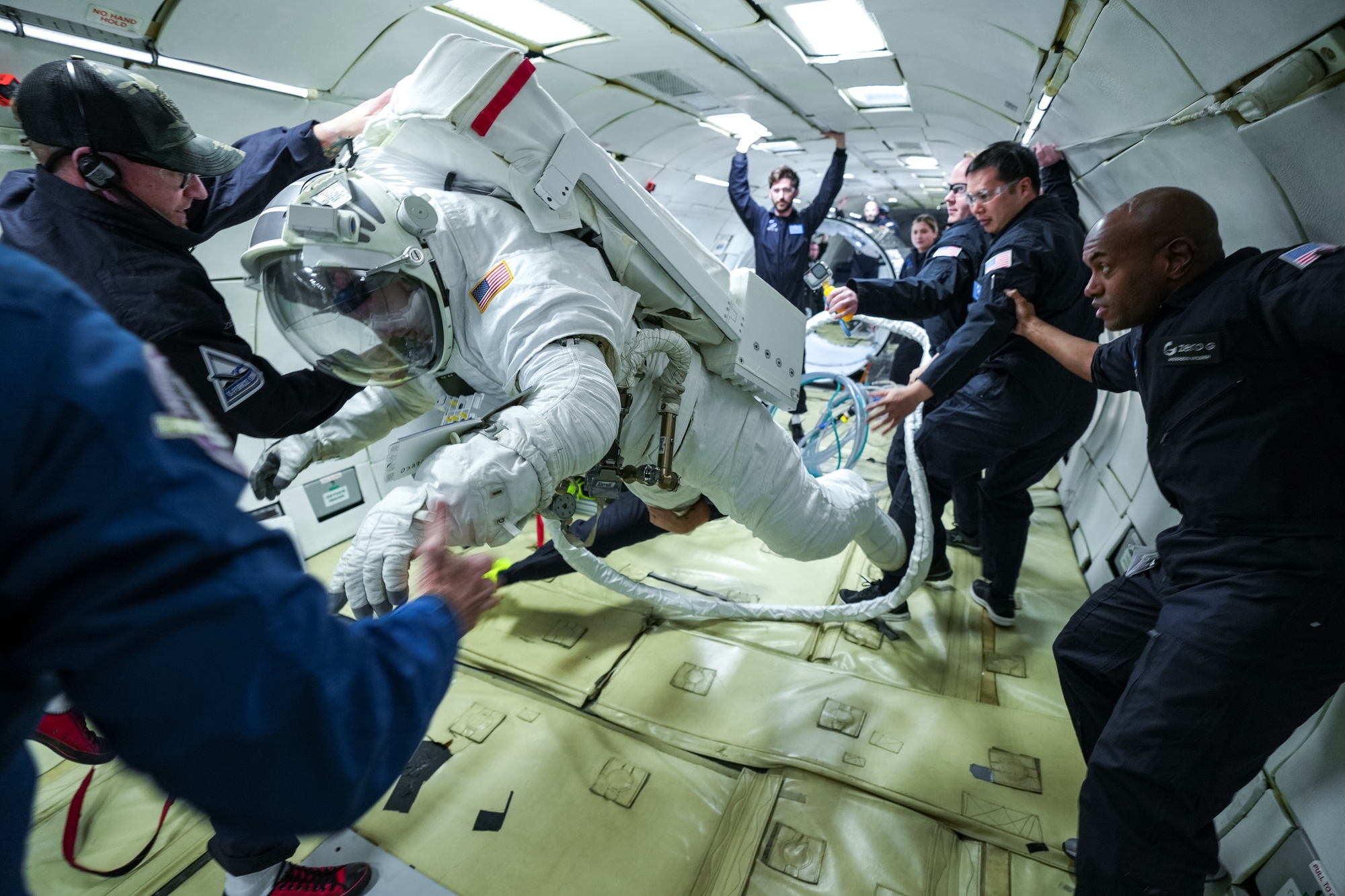WASHINGTON — As NASA grapples with more spacesuit problems on the International Space Station, the company it selected to develop replacement suits says it is pulling back from that effort.
In a statement to SpaceNews June 25, a spokesperson for Collins Aerospace, a subsidiary of RTX Corp., said the company and NASA had agreed to “descope” work on spacesuit development for the ISS under task orders that are part of a contract awarded two years ago. Reuters first reported that the company was seeking to drop out of the contract.
“After a thorough evaluation, Collins Aerospace and NASA mutually agreed to descope Exploration Extravehicular Activity Services (xEVAS) task orders. Collins remains committed to supporting NASA and human spaceflight programs,” the company stated.
NASA announced in June 2022 that it selected Collins and Axiom Space for the xEVAS program, which seeks to develop spacesuits commercially that will be offered to NASA as a service. NASA subsequently awarded a task order to Collins to work on a suit for use at the ISS, while Axiom received a task order to develop spacesuits for Artemis lunar missions.
Collins had publicly reported good progress on that suit. In February, the company said it completed tests of a prototype of the suit on parabolic aircraft flights that generated 20 seconds of microgravity at a time. “My honest opinion is that it is a far more capable suit,” Danny Olivas, a former NASA astronaut who later became chief test astronaut at Collins, said at the time.
The company did not disclose why it sought to descope the work on the project. Industry sources said they believed that Collins had suffered delays and cost overruns and concluded that it was no longer feasible for the company to continue work on it, particularly given the fixed-price nature of the contract.
NASA has not commented on the decision by Collins to end work on the suit and what steps, if any, it would take to find a new suit developer. Besides Axiom and Collins, SpaceX has been independently developing its own spacesuit that will be tested on the Polaris Dawn private astronaut mission flying on a Crew Dragon. That mission is scheduled to launch as soon as mid-July.
NASA issued “crossover” task orders to both Axiom and Collins last July, allowing Axiom to start examining how it could adapt its lunar spacesuit for use on the ISS and Collins to adapt its ISS spacesuit for lunar missions. Axiom has been focused on the Artemis suit, including a recent integrated test with NASA and SpaceX to demonstrate how the suits would integrate with the Starship lunar lander and other elements of the Artemis 3 mission.
The announcement by Collins comes after NASA experienced two consecutive scrubbed spacewalks from the ISS. NASA called off a June 13 spacewalk after astronaut Matt Dominick reported a “suit discomfort” issue shortly before the spacewalk was scheduled to begin. NASA did not elaborate on the specific problem with the suit.
NASA astronauts Tracy C. Dyson and Mike Barratt were scheduled to perform another spacewalk June 24, carrying out the tasks scheduled for the earlier, postponed spacewalk. However, just as the outer hatch to the airlock opened, Dyson reported a water leak when she disconnected a service and cooling umbilical line to her suit, as planned.
“There’s literally water everywhere,” Dyson reported as the water turned to ice, forming a layer on her helmet visor. Reconnecting the line stopped the leak, but NASA called off the spacewalk as a precaution. The agency said June 25 that astronauts inspected the suit and examined procedures for future spacewalks, but did not confirm if a planned July 2 spacewalk would take place as scheduled.
The spacesuits currently used on the station, known as Extravehicular Mobility Units or EMUs, are decades old and have suffered problems as they age. In 2022, NASA held off using the suits for routine spacewalks for several months after an astronaut reported seeing a thin layer of water on the inside of his visor at the end of a spacewalk. NASA concluded that “integrated system performance” rather than a specific hardware flaw caused that water to form.
NASA safety advisers have warned about the risks posed by the aging EMUs for some time. “It is an undeniable fact that the 40-year-old EMUs used in ISS operations are reaching the end of their useful life,” NASA’s Aerospace Safety Advisory Panel noted in a 2019 recommendation, calling for an “immediate transition” to new suits “before the risk to EVA [extravehicular activity] becomes unmanageable.” That recommendation remained open as of the panel’s latest annual report in January.

